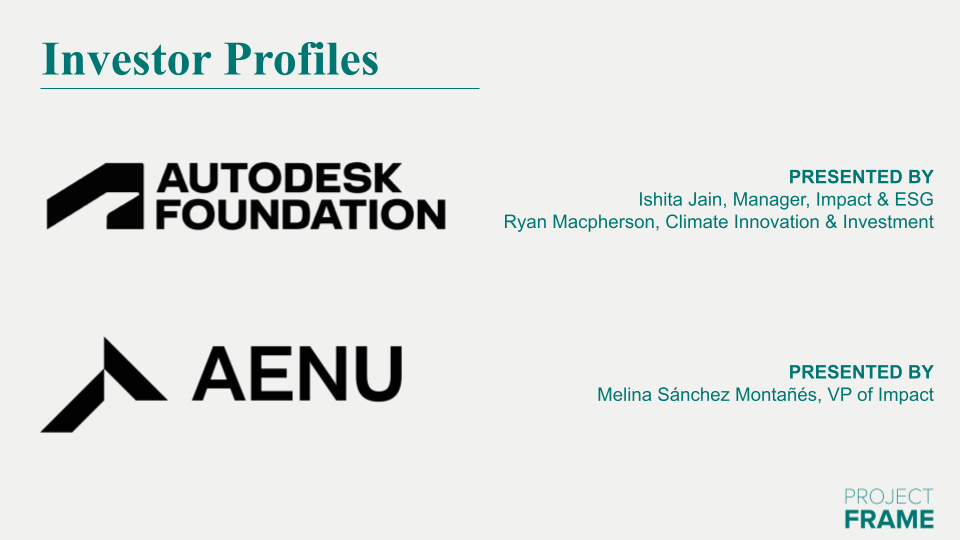December 2022 Community Meeting
Where is capital going and where should it be directed to reduce greenhouse gas emissions rapidly?
Just over 100 community members gathered to explore that question on Dec. 8 at the December 2022 Project Frame Community Meeting, where we learned about the impact accountability practices of Project Frame members Autodesk Foundation and AENU as a part of the ongoing Investor Profile series, and were joined by Project Drawdown Executive Director Dr. Jonathan Foley, Planeteer Capital and CTVC’s Sophie Purdom, and Prof. Ramana Nanda of Imperial College London.
Project Frame is a coalition of investors dedicated to addressing forward-looking emissions impact, consisting of over 200 members from 5 continents, representing 80 venture capital or private equity investors and $40 billion in raised investment dedicated to climate.
Autodesk Foundation and AENU share impact accountability best practices
“Impact accountability is at the core of what we do,” said Ishita Jain, Impact Insights & Analysis Manager at the Autodesk Foundation.
Autodesk Foundation is the 3D software corporation’s vehicle for catalyzing innovation, with an investment thesis of “[supporting] the design and creation of innovative solutions transforming our industries to be inclusive, resilient, and sustainable.”
For Autodesk Foundation, investments take the form of capital in addition to leveraging the corporation’s in-kind value through technology, talent, connections to markets, and marketing functions, explained Ryan Macpherson, Climate Innovation and Investment Lead.
“Forward-looking impact assessment and holding ourselves accountable with rigor and credibility to the impact outcomes we hope to draw from investments is tremendously important, not only for the Foundation’s work but also for how we think about bringing it to Autodesk and our overall strategy,” said Macpherson.
AENU is an evergreen impact fund whose work is grounded in the belief that current financial systems have contributed to environmental degradation and increased social inequalities, explained Melina Sánchez Montañés, VP of Impact. As such, they are working towards reinventing the system.
“This new system for us is called impact capitalism, which is optimized for social and environmental wellbeing,” Sánchez said.
Sánchez Montañés explained that AENU’s impact goals include greenhouse gas emissions but also extend beyond climate by considering well-being, a catch-all based on OECD framework that considers equality and environmental health, among other factors.
In AENU’s pre-investment impact assessment, Sanchez Montanes emphasized the importance of evaluating impact risk while highlighting that they offer carried interest to all members of their team at exit, aligning with their theory of change and the principle of “leveling the playing field.”
Explore more impact investing best practices by diving into AENU, Autodesk Foundation, and other Project Frame Investor Profiles.
VCs are ready to support climate solutions
If there’s a time to be optimistic about VC funding for climate solutions, it’s now.
Based on the data presented by CTVC, a newsletter that tracks deal activity in the climate tech space, there have been “well over 1,000 shots on goal by companies and founders building towards climate solutions” since Q3 2020, with climate tech founders raising over $70 billion in the same time frame, shared co-founder Sophie Purdom.
She explained that with a conservative count, there have been 132 new climate funds since 2021, which they have estimated to equate to around $37 billion earmarked for climate.
Focus on the time scale of solutions, not just their impact
“We need more capital but also we need smarter capital,” said Project Drawdown Executive Director Jonathan Foley. “We need to not only deploy as much as we can but also make sure that when we’re deploying capital, we’re deploying it to the right places and that’s guided by science.”
Foley stressed that “the key question is the value of time,” explaining that the emissions reduction impacts of climate solutions are cumulative, meaning that low-tech climate solutions will have the most time to reduce emissions at a gigaton scale, whereas the impact of hard-tech carbon removal projects will take longer to build to a significant level.
“Early action is the gift that keeps on giving.”
Foley explained that Project Drawdown identified electricity, food and agriculture, nature-based solutions, and social interventions as sectors that could take advantage of the time multiplier effect and amplify impact.
“I urge you to think about your portfolios not just across sectors and technologies and solutions, but when do they kick in?”
Smoothing friction between deep tech research and VC funding
“What are the frictions that are driving the wedge between where we want the money to go and where it’s actually going?” asked Imperial College London Professor Ramana Nanda as he explored the link between the deep-tech climate research that is coming out of universities and VC funding.
“Venture capitalists will move towards places where there is the ability to create and capture a lot of value and oftentimes [early deep tech is] where it’s harder to appropriate value,” he said.
Other challenges Nanda identified include that early scientific experiments are not necessarily geared towards driving value in the eyes of investors and lack of connection between science and business for researchers who may be uninterested in the latter. He also shared that because large funds tend to support later-stage ventures, there is a need for “people who are focused on understanding the technical risks and [to] deliver to them high-quality investment opportunities.”
In doing so, Nanda said, “we can start a virtuous cycle of high-quality investments” that supports early-stage investors, the scaling of new technologies, and large funds alike.
“Venture capital has incredible promise,” said Nanda. “With the help of philanthropic money, impact funds, and some of the work that we and others are doing in universities, the goal is really to take these ideas and get them further along the path to being commercially viable and then hand off to the trillions of dollars that lie in the capital markets.”
Want to get involved in establishing best practices for climate solutions investing? Sign up for the Project Frame newsletter.


